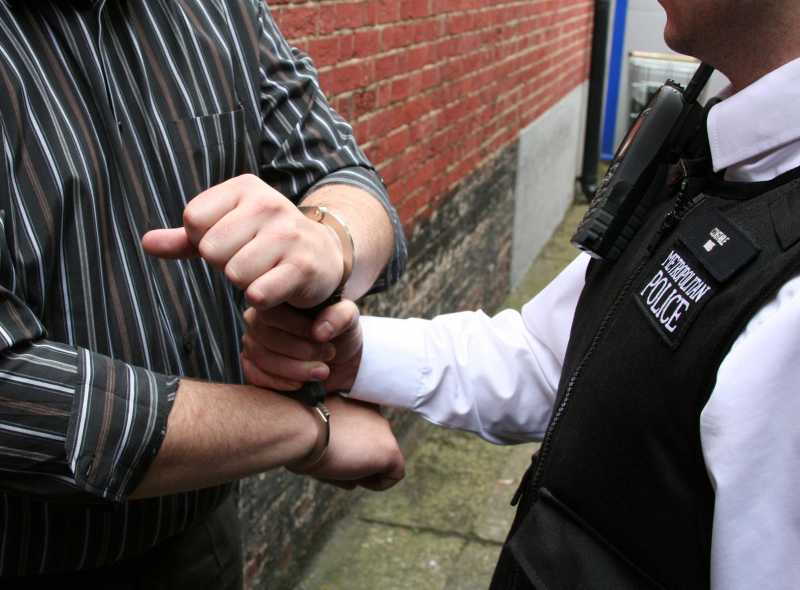Police arrest several doctors, teachers, scout leaders, care workers and former police officers during a nationwide crackdown on paedophiles networks.
 The unprecedented six-month operation coordinated by the National Crime Agency (NCA) and involving 45 police forces across England, Wales, Scotland and Northern Ireland exposed the highly organised paedophiles network. More than 400 children across the UK have been safeguarded, the agency said in a statement.
The unprecedented six-month operation coordinated by the National Crime Agency (NCA) and involving 45 police forces across England, Wales, Scotland and Northern Ireland exposed the highly organised paedophiles network. More than 400 children across the UK have been safeguarded, the agency said in a statement.
Of the 660, 39 people were Registered Sex Offenders but the majority of those arrested had not previously come to law enforcement’s attention. Some of those arrested had unsupervised access to children in the course of their work. Doctors, teachers, scout leaders, care workers and police officers are excluded from intensive check to protect children.
The agency estimates that there are 50,000 people in the UK who access child abuse images and videos on the internet. Sources said that thousands of suspects other than those arrested have been identified by the investigation as it unravels a complex web of online connections. Inquiries are continuing and there will be further arrests, but such is the extent of the offending that police cannot arrest every suspect — the criminal courts would be unable to cope with the caseload and prison overcrowding could hit breaking point.
NCA Deputy Director General Phil Gormley said: “This is the first time the UK has had the capability to coordinate a single targeted operation of this nature. Over the past six months we have seen unprecedented levels of cooperation to deliver this result. Our aim was to protect children who were victims of, or might be at risk of, sexual exploitation. A child is victimised not only when they are abused and an image is taken. They are re-victimised every time that image is viewed by someone.
“Some of the people who start by accessing indecent images online go on to abuse children directly. So the operation is not only about catching people who have already offended – it is about influencing potential offenders before they cross that line. We want those offenders to know that the internet is not a safe anonymous space for accessing indecent images, that they leave a digital footprint, and that law enforcement will find it”.
Chief Constable Simon Bailey, the National Policing Lead for Child Protection and Abuse Investigations, said: “Sexual abuse is a complex crime taking many forms. The vast majority of forces around England and Wales are dealing with an unprecedented increase in the number of reports of sexual abuse of children. Forces are investigating exploitation of children and young people by groups and gangs, non-recent abuse including large scale investigations into abuse in institutions over many years and sexual abuse by parents and family members.
“During this operation, we’ve targeted offenders accessing child abuse images. Police must continue to use a range of investigative techniques targeting all forms of abuse if we going to protect children and bring offenders to justice. Chief officers are committed using all the tools available to them because nothing is more important in policing than protecting vulnerable people”.
John Carr, Secretary, UK Children’s Charities’ Coalition on Internet Safety:
“This huge operation provides another distressing illustration of the scale of online offending against children but perhaps more importantly it also sends out a very clear warning to paedophiles and collectors of indecent images everywhere that the internet is increasingly becoming a very hostile environment for them. Police forces all over the world are co-operating on an unprecedented scale in pursuit of online child sex offenders and they are deploying technical tools to track them down with ever greater effectiveness.
Claire Lilley, Head of Online Safety at the NSPCC: “This is an important two-pronged operation which has rescued children from abuse and also identified many previously unknown sex offenders. Direct action like this sends a strong message to those who subject children to harrowing sexual assaults that they can and will be traced and prosecuted. But law enforcement agencies alone cannot deal with the vast problem of illegal images which continue to flood the market. Industry has to find inventive ways of blocking the flow of such horrendous pictures which are only produced through the suffering of defenceless children – many of who are not even old enough to go to school. So while this operation must be rightly applauded we should view it as yet another warning sign that far more needs to be done if we are to stem the sordid trade in these images, which are often used by those who go on to abuse children.”